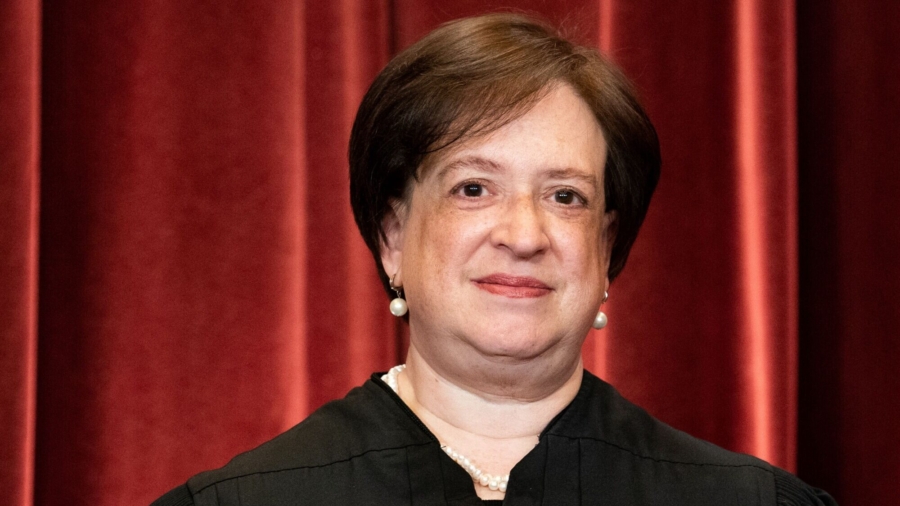The Supreme Court ruled 5–4 against a hospital system that serves low-income people in Washington state, finding that the formula the U.S. Department of Health and Human Services (HHS) uses to calculate Medicare reimbursements is correct.
The ruling is a victory for the Biden administration.
The case, on appeal from the U.S. Court of Appeals for the 9th Circuit, is Becerra v. Empire Health Foundation, court file 20-1312. Xavier Becerra is U.S. secretary of health and human services. Empire Health Foundation describes itself as “a private health conversion foundation formed in 2008 through the sale of Deaconess and Valley Medical, a nonprofit hospital system in Spokane, Washington.”
At issue was how HHS figures out special Medicare payments to “disproportionate share hospitals,” sometimes called “DSH hospitals,” whose patients are largely low-income persons.
Elderly and disabled people receive health insurance by virtue of the Medicare Act, under which hospitals generally receive fixed-fee payments for services rendered. Hospitals are paid predetermined amounts for each Medicare patient treated, but DSH hospitals receive higher fees to cover the increased cost of treating low-income individuals, who are often in worse health.
HHS supplements payments to DSH hospitals using a mathematical formula. The agency adds two fractions, known as the Medicare fraction and the Medicaid fraction, both of which separately measure a hospital’s low-income patients. Medicaid is a joint federal-state program that treats the indigent. Sometimes individuals qualify for both programs at the same time and are referred to as “dual eligibles.”
At the oral argument on Nov. 29, 2021, justices complained that the governing statute contained unclear language and was very difficult to understand. Justice Clarence Thomas said that the law was bogged down with “indecipherable language.” Justice Sonia Sotomayor bemoaned that the statute “applies three different meanings to the same word.”
Justice Elena Kagan wrote the court’s opinion (pdf) in the case.
There was an unusual split among the court’s six conservative justices. Justices Clarence Thomas and Amy Coney Barrett sided with Kagan, but Chief Justice John Roberts and Justices Samuel Alito, Neil Gorsuch, and Brett Kavanaugh dissented. Liberal Justices Stephen Breyer and Sonia Sotomayor voted for Kagan’s opinion.
Kagan wrote that HHS pays a hospital a fixed rate for treating each Medicare patient, and that rate is “based on the patient’s diagnosis and regardless of the hospital’s actual costs.” The rates are supposed to reflect what an efficiently-run hospital in a region would spend to treat patients with the same diagnosis. “If the hospital spends anything more, it suffers a financial loss. The flat-rate payment system thus gives hospitals an incentive to provide efficient levels of medical service.”
But Congress provided for various hospital-specific rate adjustments. The DSH adjustment increases Medicare payments for hospitals serving an unusually high percentage of low-income individuals. The mark-up is a recognition that low-income people “are often more expensive to treat than higher income ones, even for the same medical conditions.” The DSH mark-up encourages hospitals to accept low-income patients, she wrote.
The so-called Medicare fraction and the Medicaid fraction “are designed to capture two different low-income populations that a hospital serves.” The Medicaid fraction is supposed to represent the “proportion of a hospital’s Medicare patients who have low incomes, as identified by their entitlement to supplementary security income (SSI) benefits,” which is a welfare program for needy individuals. The Medicaid fraction is supposed to represent the “proportion of a hospital’s patients who are not entitled to Medicare and have low incomes, as identified by their eligibility for Medicaid.”
“So at a high level of generality, the Medicare fraction is a measure of a hospital’s senior (or disabled) low-income population, while the Medicaid fraction is a measure of a hospital’s non-senior (except for disabled) low-income population,” Kagan continued.
Empire Health argued that HHS has violated the instructions Congress gave it to the hospital system’s detriment.
Acknowledging the unusual complexity of the issues involved, Kagan rejected this argument, writing that the “text, context, and structure [of the DSH provisions] all support calculating the Medicare fraction HHS’s way.” The court reversed the 9th Circuit, which had ruled for Empire Health and remanded “the case for further proceedings consistent with this opinion.”
In his dissenting opinion that was joined by Roberts, Alito, and Gorsuch, Kavanaugh also acknowledged that “the statutory formula for determining exactly how much HHS will pay to those hospitals is mind-numbingly complex.”
But HHS’s “misreading” hurts “hospitals that serve low-income patients, thereby hamstringing those hospitals’ ability to provide needed care to low-income communities. In my view, HHS’s 2004 interpretation is not the best reading of this statutory reimbursement provision,” Kavanaugh wrote.
A spokesperson for Empire Health attorney Daniel Hettich of the law firm King and Spalding said by email that the lawyer declined to comment on the ruling.
The Epoch Times reached out to the U.S. Department of Justice, but had not received a reply as of press time.
From The Epoch Times

